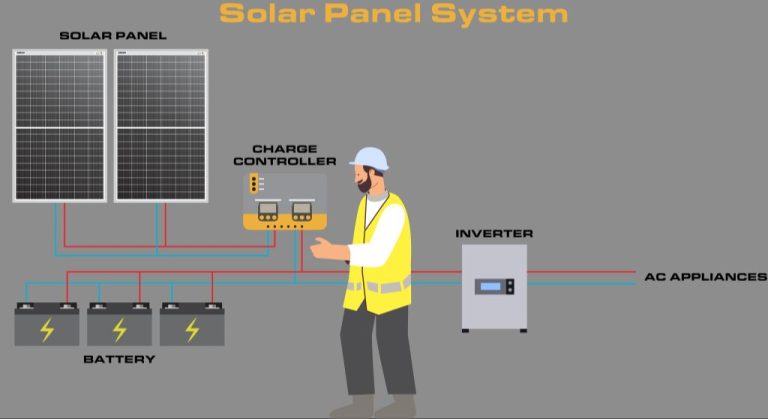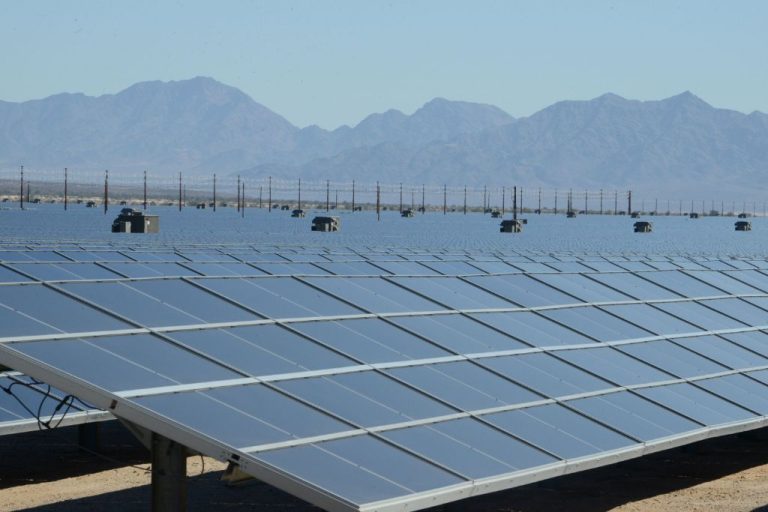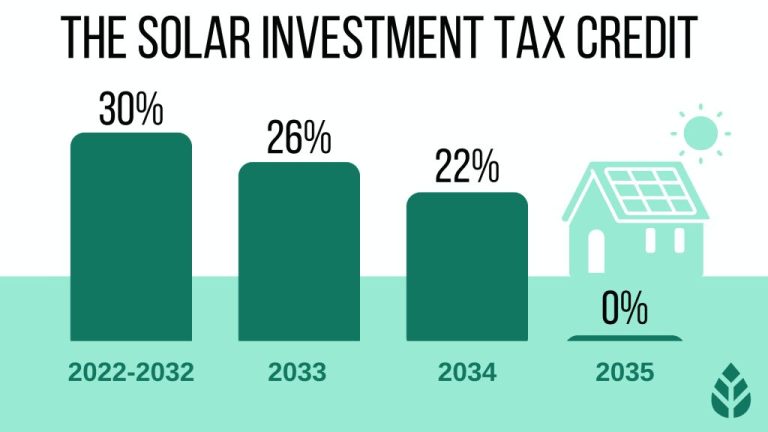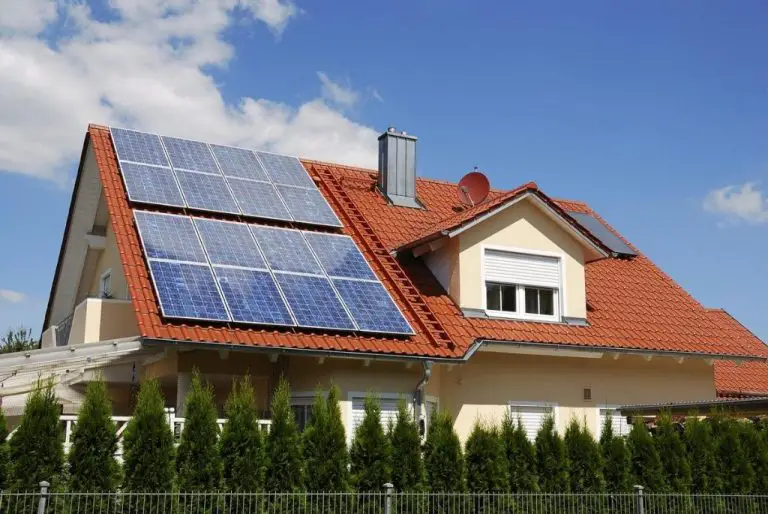How Do Solar Panels Put Electricity Back Into The Grid?
Introduction
The electrical grid is an interconnected network that delivers electricity from power plants to homes and businesses. It consists of power generation plants, transmission lines that carry high-voltage electricity over long distances, and distribution lines that deliver lower-voltage electricity to end users.
Traditionally, electricity flows in one direction on the grid – from the power plants towards the users. Power plants like coal, natural gas, nuclear etc. produce massive amounts of electricity that gets fed into the transmission system. The transmission system carries electricity via overhead power lines to substations that lower the voltage. From substations, distribution lines deliver electricity to homes and businesses.
With solar panels, electricity can flow in both directions. Solar panels on homes and businesses generate clean electricity from sunlight. When a solar energy system produces more electricity than a home or business is using, the excess electricity is exported to the grid. This allows solar panel owners to get credit for the excess electricity they generate. The electricity exported to the grid can supply other homes and businesses connected to the local distribution system.
How Solar Panels Produce Electricity
Solar panels produce electricity through the photovoltaic effect. When photons from sunlight hit the solar cell material, they transfer their energy to electrons in the material, causing the electrons to break free and flow through the material to produce electricity. The most common solar cell material is silicon, which is treated to form two layers – a negative layer with extra electrons, and a positive layer that is electron deficient. When sunlight enters the solar cell, the photons strike the electrons in the negative layer, energizing them to flow through an external circuit to the positive layer. This flow of electrons is an electric current.
Solar cell materials and designs have improved over time to increase efficiency and harness more of the sun’s energy. Crystalline silicon cells were the first type developed in the 1950s and remain the most common. However, newer materials like gallium arsenide and perovskites allow solar panels to be more efficient at converting photons to electricity. Solar cell shapes and structures have also advanced, with textured surfaces that can trap more light and multi-layer cells to absorb different wavelengths. These advances allow modern solar panels to convert over 20% of the sun’s energy into usable electricity.
Inverters
Solar panels produce direct current (DC) electricity, but the electricity in our homes and the grid is alternating current (AC). Inverters play a crucial role in converting the DC output of solar panels into usable AC power.
Inverters take the DC output from the solar panels and convert it into AC at the required voltage and frequency. This allows the solar power to be used directly in your home and fed back into the electrical grid.
There are string inverters which are connected to multiple solar panels, and microinverters which are attached to each individual panel. String inverters are more common for home systems as they are less expensive, while microinverters can provide more granular monitoring and control.
Grid-tie inverters are a special type designed to synchronize the output of a home solar array with the existing grid power. This allows seamless transfer of solar power to the grid when not being consumed on-site.
Inverters also play a safety role by isolating the solar array from the grid when power is lost. They allow solar systems to turn on and off automatically as needed, and provide vital performance monitoring data.
Metering Systems
Solar panels use metering systems to track the flow of electricity into and out of the grid. There are two main types of metering systems:
Net Metering: Net metering uses a single, bi-directional meter that spins forwards when electricity is consumed from the grid, and backwards when excess solar electricity is exported to the grid. At the end of the billing period, you are billed for your net electricity usage.
Gross Metering: Gross metering uses two separate meters – one that measures electricity consumed from the grid, and another for excess solar electricity exported. You are billed for electricity consumed from the grid at retail rates, and credited or reimbursed at a lower rate for excess solar electricity exported.
Net metering is the most common arrangement as it credits solar panel owners with full retail value for excess electricity fed into the grid. Gross metering provides lower financial incentives, but allows utility companies to better recover grid infrastructure costs from solar customers.
Safety and Regulation
For solar panels to export electricity back to the grid safely, they must meet certain standards and regulations. Chief among these are grid connection standards that ensure the system interacts properly with the grid infrastructure.
Grid connection standards specify technical requirements for connecting to the grid such as voltage, frequency, power quality, and anti-islanding capabilities. Anti-islanding prevents solar panels from continuing to energize a section of the grid that has been disconnected from the utility power source. This is an important safety feature to prevent possible injury to utility workers.
Another key regulation is the requirement for automatic shutoff switches. These switches automatically disconnect solar panels from the grid when voltage or frequency parameters are out of bounds. This protects utility equipment and workers who may be performing maintenance on the grid.
Overall, regulations ensure that solar energy systems integrate smoothly with the existing grid infrastructure. By meeting connection and shutoff standards, solar panels can export excess electricity safely and reliably.
Exporting Electricity to the Grid
When solar panels generate more electricity than a home is using, the excess electricity can be exported back to the main power grid. This requires connecting the solar panel system to the main electrical panel of the house. Most solar panel installations will include a net meter that monitors both the electricity being used from the grid and any excess being exported back to the grid.
The net meter runs forwards when power is being drawn from the grid, and backwards when power is being exported to the grid. This allows any excess electricity generated by the solar panels to offset electricity that is consumed from the grid at a different time, for example at night when solar production has decreased but household energy demand is still present. The utility company will monitor and credit the homeowner for any net excess production.
Safety features ensure the flow of electricity is isolated from the main grid when the grid suffers an outage. The connection has to adhere to electrical codes and standards to ensure proper integration with the existing infrastructure and to protect utility workers. Overall the export process allows solar panel owners to get the most value from their system by utilizing as much solar energy as possible, even energy in excess of their immediate home needs.
Financial Benefits of Exporting Electricity to the Grid
Installing solar panels provides homeowners with significant financial benefits through exporting excess electricity back to the grid. There are two key ways solar panel owners can earn money:
Offsetting Electricity Costs
The electricity generated from solar panels first supplies the home’s own needs. Any excess electricity is then fed back into the grid. This means homeowners with solar panels reduce the amount of electricity they need to buy from their utility provider.
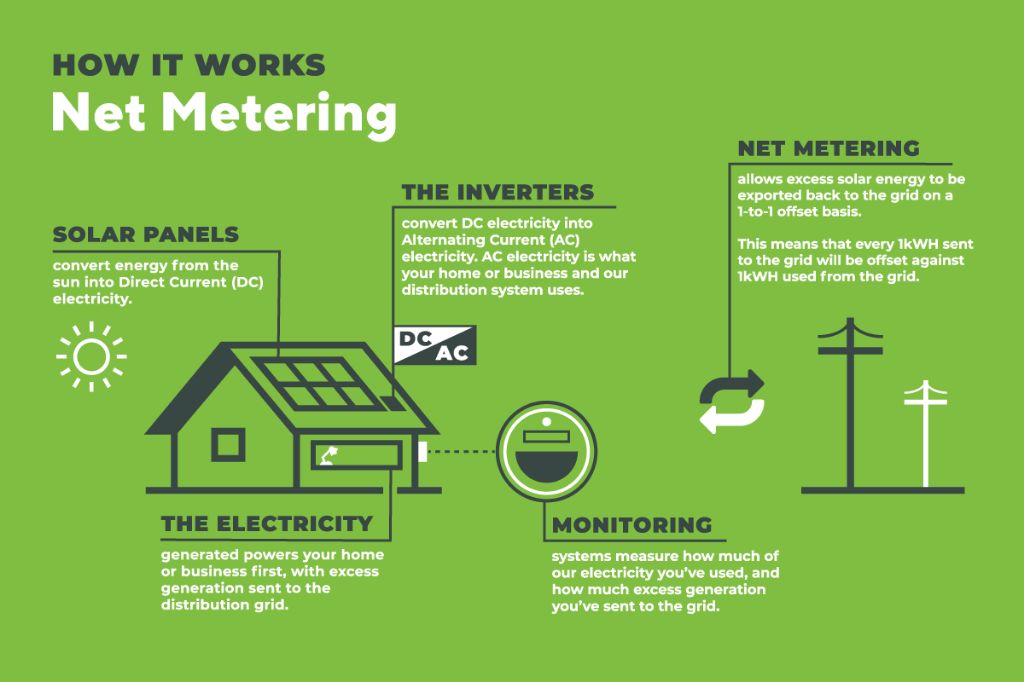
Over the lifespan of a solar PV system, owners can save thousands in utility bills. The more energy generated, the greater the savings. Exporting surplus electricity helps recoup the upfront cost of installing solar panels.
Earning Money for Excess Power
Many utility companies and states have “net metering” policies, which require utilities to pay homeowners for excess power exported to the grid. The home’s meter runs backwards as electricity is sent out, reducing the net energy used over a billing cycle.
At the end of each billing cycle, if the home has generated more electricity than it has consumed, the utility provider compensates the homeowner. This results in a credit on their next bill, or in some cases, a direct payment.
The financial return depends on electricity rates and net metering policies, which vary by location. But overall, exporting surplus solar power earns homeowners additional income from their PV system investment.
Environmental Benefits
Using solar panels to generate electricity provides significant environmental benefits compared to relying on fossil fuel-based energy sources. Two major environmental advantages of solar power are reducing reliance on fossil fuels and lowering carbon emissions.
Fossil fuels like coal, oil and natural gas emit high levels of carbon dioxide and other greenhouse gases when burned to produce electricity. Greenhouse gas emissions are the leading cause of climate change. Solar panels generate clean, renewable electricity without releasing any emissions. Widespread use of solar power would lessen dependence on dirty fossil fuel plants and help fight global warming.
Solar panels can also reduce air and water pollution. Conventional power plants produce large amounts of sulfur dioxide, nitrogen oxides and particulate matter emissions that contribute to smog, acid rain and respiratory illnesses. Fossil fuel plants also use massive amounts of water for cooling. Solar photovoltaic panels require no water to operate and do not generate any air pollution or global warming emissions.
With solar panel installations growing exponentially around the world, the transition to clean energy is accelerating. Solar power allows countries to move away from unsustainable and environmentally harmful fossil fuels. The growth of solar energy will be a key element in reducing greenhouse gas emissions and preventing the worst consequences of climate change.
Future Outlook
The future is bright for solar panel adoption and grid integration. As technology improves, solar panels are becoming increasingly affordable and efficient at converting sunlight into usable electricity. Many experts predict that prices will continue to fall while efficiency rises over the next 5-10 years.
Policy incentives also play a major role in accelerating the growth of solar power. Governments around the world offer tax credits, rebates, net metering, renewable energy certificates and other financial incentives to make solar panels more cost effective. With strong policy support, solar power is expected to continue its rapid growth and grid integration.
The modular nature of solar panels makes them ideal for distributed, decentralized electricity production. Rather than relying solely on huge centralized power plants, local solar panels on homes and businesses allow consumers to contribute clean power back into the grid. This distributed approach increases grid resilience and reduces the need for long distance transmission lines.
Overall, the future is very bright for solar panels’ ability to export surplus clean electricity to power grids around the world. We can expect to see panels become a ubiquitous sight on rooftops, with their excess generation feeding into smarter, more dynamic grids powered by increasing amounts of renewable energy.
Conclusion
In summary, solar panels produce clean renewable electricity by converting sunlight into direct current electricity using photovoltaic cells. This DC power is converted into alternating current by inverters and flows into the home electrical system. Any excess electricity gets exported back to the electricity grid through net metering. Homeowners with solar panels can earn bill credits for the excess power they generate and provide to the grid, offsetting the cost of installing the system over time. Solar energy provides financial benefits to homeowners as well as environmental benefits by reducing reliance on fossil fuels. As solar panel costs continue to decrease while efficiency increases, solar power is expected to play a major role in the clean energy transition and reducing carbon emissions worldwide. With supportive policies, solar power can become a mainstream energy source and help create a sustainable energy future.

